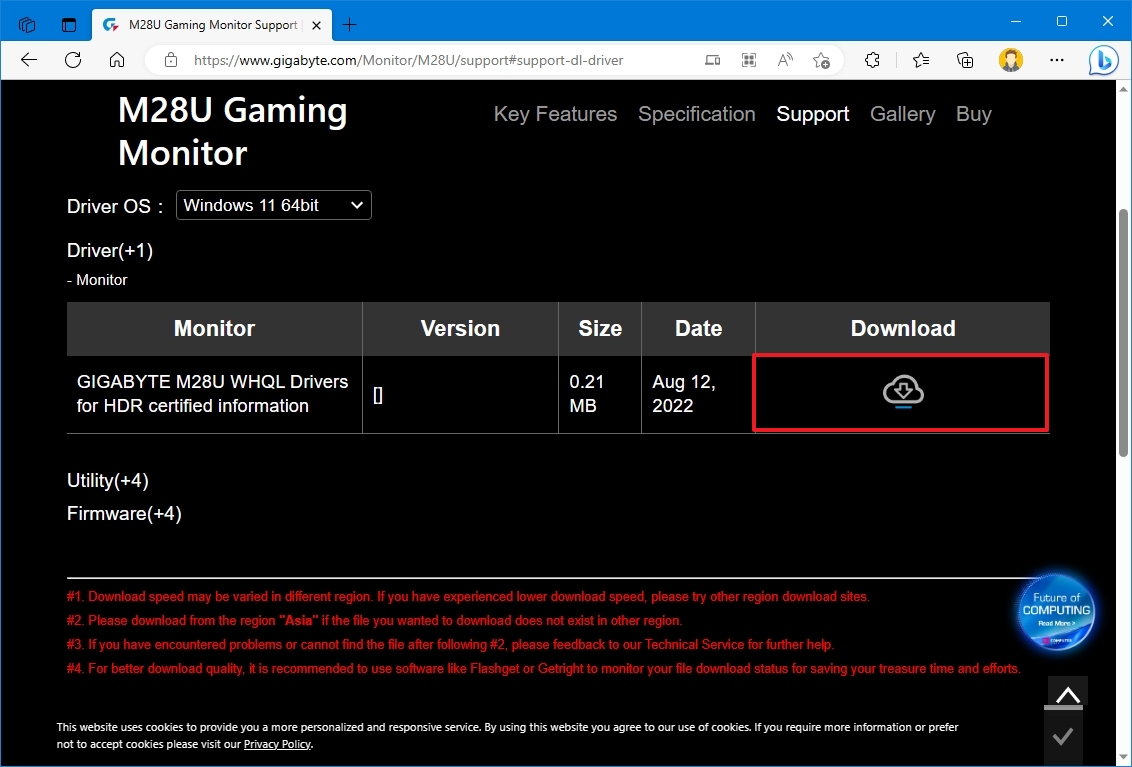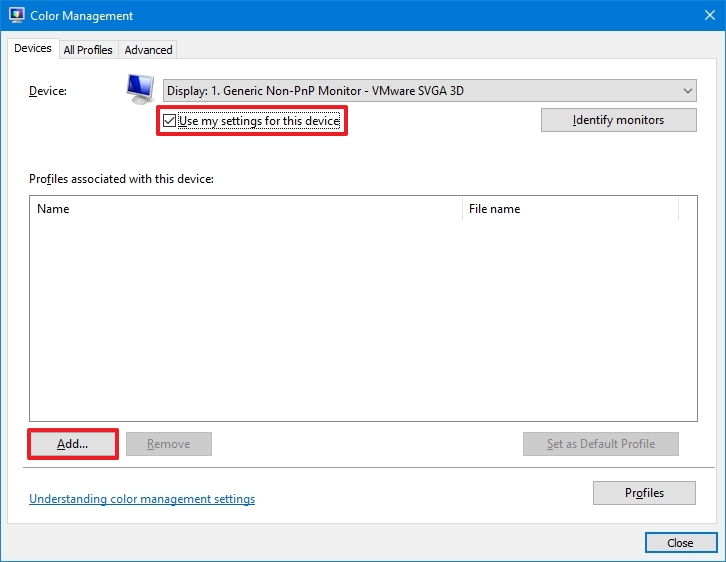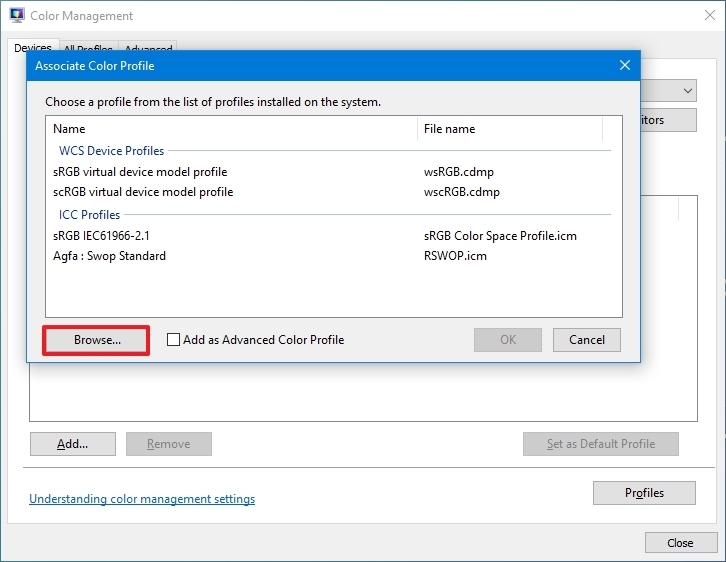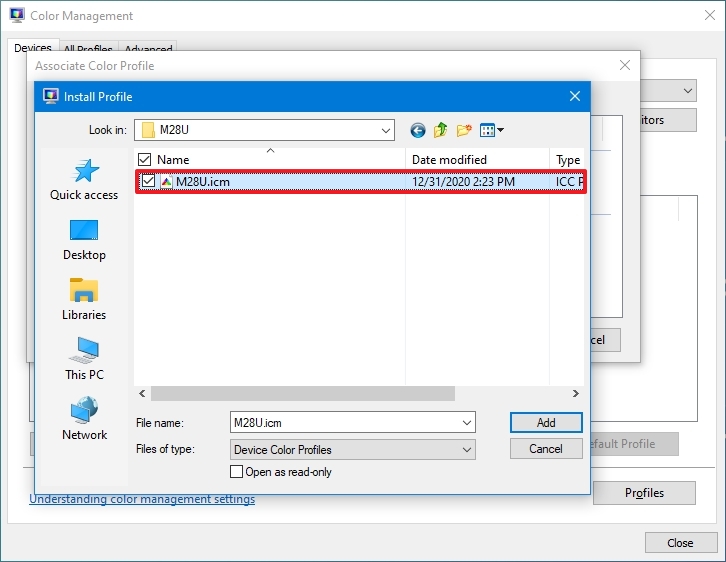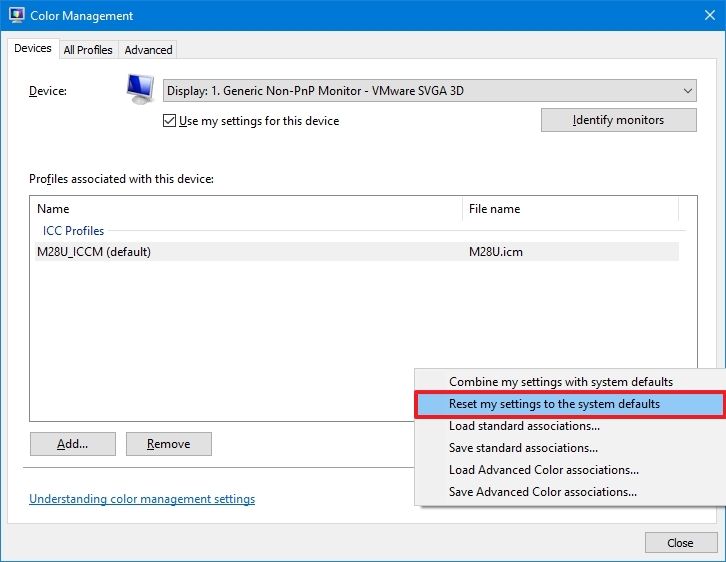How to find the correct monitor color profile on Windows 10
Are you seeing colors washed out or off on your monitor? If so, you can fix this problem by applying the correct color profile, and here's how.

Accurate color representation is important on a computer monitor (especially for anyone working in photography, editing videos professionally, or playing games). Since not every display is built the same, using the correct color profile is crucial to ensure colors look as natural as possible.
A color profile is a group of information that controls the system on how colors should render on the screen. Only when using the appropriate profile for a device (for example, monitor, camera, printer, and scanner) you'll be able to see colors as intended by the manufacturer.
Although Windows 10 can display colors on the screen adequately, if your computer isn't configured with the correct profile, you may notice some color inconsistency, including colors that look washed out or otherwise off on your screen.
If colors are not rendering correctly, there's a good chance it's not an issue with the monitor. Instead, it could be a color profile problem, which you can quickly resolve using the Color Management tool built into the operating system.
This how-to guide will walk you through the steps to find and set the correct color profile to achieve the best color representation possible on your Windows 10 computer.
How to find color profile for your monitor
Typically, manufacturers include the proper color profiles (also known as "ICM" or "ICC" files) within the driver or with the monitor's disc.
Although you can always extract the color profile from the disc, if that's impossible, you can download the file from your manufacturer's support website.
All the latest news, reviews, and guides for Windows and Xbox diehards.
To find the correct color profile for your display on Windows 10, use these steps:
- Open the monitor's support website.
Here's a list of some of the popular monitor manufacturer's support websites:
- Open to the download section.
- Using your monitor's model number, search for the latest monitor driver (not the graphics driver).
- Quick tip: You can find the monitor model number on the back of the device or, on Windows 10, open Settings > Displays > Advanced graphics settings.
- Click the download option and save the ".exe" or ".zip" file on your computer.
- Double-click to open the file.
- Click the Extract all button from the command bar (if this is a Zipped folder).
- Continue with the on-screen directions to extract its content.
- Open the folder with the extracted files.
- Confirm the ".icm" file, which is the color profile for your monitor.
Once you complete the steps, you can install the correct color profile for the monitor on Windows 10.
How to install color profile for your monitor
The next step is to install the profile on your device, which you can do using the "Color Management" tool.
To install a color profile on Windows 10, use these steps:
- Open Start.
- Search for Color Management and click the top result to open the app.
- Click the Devices tab.
- Select the monitor to set a new color profile using the "Device" setting.
- Quick tip: If you have a multi-monitor setup, and you're not sure which monitor you're about to update, click the Identify monitors button.
- Check the "Use my settings for this device" option.
- Click the Add button.
- In the "Associated Color Profile" page, click the Browse button.
- Open the folder with the color profile file.
- Select the ".icm" file.
- Click the Add button.
- Click the Close button.
After you complete the steps, you may notice a slight color change on your display. This behavior is expected because you told the system to use a different profile to display colors.
How to reset color profile settings on Windows 10
If something goes wrong, or you want to revert the changes, you can use these steps to reset your monitor settings to the default color profile.
To revert the color profile changes on Windows 10, use these steps:
- Open Start.
- Search for Color Management and click the top result to open the experience.
- Click the Devices tab.
- Click the Profile button.
- Select the monitor to reset using the "Device" setting.
- Click the Profiles button and choose the "Reset my settings to the system defaults" option.
Once you complete the steps, your selected monitor will revert to its default color profile settings.
Although the Color Management tool allows you to set up custom color profiles manually, remember that monitors, as well as other devices, usually install the recommended color profile during the setup process automatically, which means that most of the time, you don't have to mess with these settings.
More Windows 10 resources
For more helpful articles, coverage, and answers to common questions about Windows 10, visit the following resources:
- Windows 11 on Windows Central — All you need to know
- Windows 10 on Windows Central — All you need to know

Mauro Huculak has been a Windows How-To Expert contributor for WindowsCentral.com for nearly a decade and has over 22 years of combined experience in IT and technical writing. He holds various professional certifications from Microsoft, Cisco, VMware, and CompTIA and has been recognized as a Microsoft MVP for many years.
